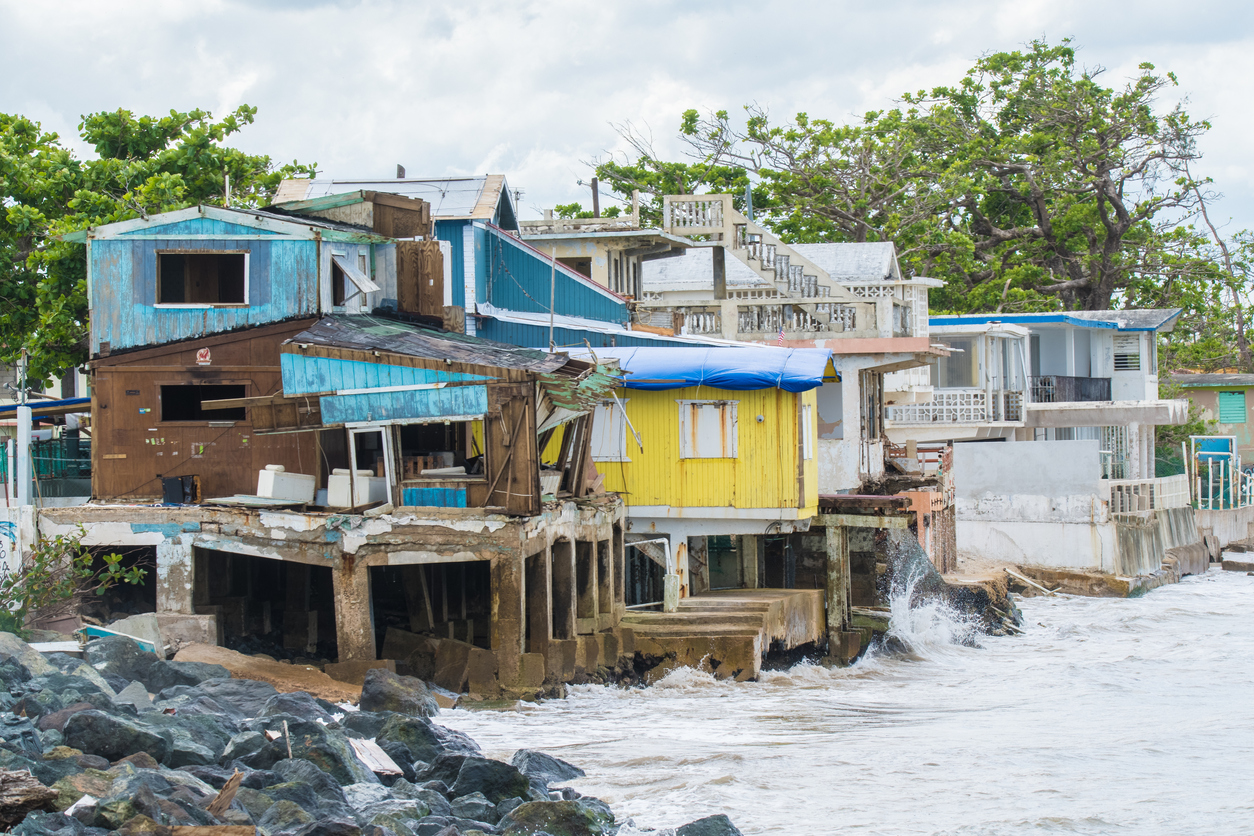The report, by researchers at George Washington University’s Milken Institute School of Public Health, estimated there were 2,975 excess deaths in Puerto Rico from September 2017 through February 2018 stemming from the hurricane. That far surpasses the original official count and is more than double some of the previous estimates from academic studies and media organizations.
Puerto Rico’s government has faced criticism for nearly a year that it drastically undercounted the number of fatalities caused by Maria. Earlier this month, it acknowledged in a document filed to Congress that the death toll from Maria was much higher than the official total.
Gov. Ricardo Rosselló said at a news conference Tuesday that he would sign an executive order updating the official death toll, with the caveat that the number was an estimate. And he said he took responsibility as the island’s governor for mishandling the fatality-count issue.
“Yes, I made mistakes. Yes, in hindsight, things could have been handled differently,” Mr. Rosselló said. “My commitment as governor is accepting that criticism, but also building on it.”
The updated count makes Maria one of the deadliest hurricanes in U.S. history. Hurricane Katrina, which struck the Gulf Coast in 2005, killed more than 1,830 people.
The release of the George Washington University study comes as the one-year anniversary of Hurricane Maria approaches on Sept. 20, and Congress considers the island government’s request for federal aid to rebuild from the storm.
Mr. Rosselló also said he planned to create a commission to help implement some of the recommendations by the George Washington University researchers and others. They include improving coordination and training for agency staffers involved in mortality surveillance.
He said he had “a firm commitment to making sure that I do everything that’s within my power so that under other circumstances like this, we are much better prepared.”
The study found that all areas of the island were affected by the storm, but certain areas and groups were more vulnerable. The risk of death was 45% higher for people living in poorer municipalities, the study said. Puerto Rican men aged 65 and older also had a higher risk of death.
“The latest study…puts the tragedy of Hurricane Maria on the same scale as the Sept. 11 attacks,” said Rep. Bennie G. Thompson (D., Miss.), the top Democrat on the House Homeland Security Committee, in a statement. “Because FEMA and the federal government were simply unprepared, thousands of our fellow American citizens have perished—and we now know that the poor and elderly were the most at risk.”
“The federal government has been, and will continue to be, supportive of Gov. Rosselló’s efforts to ensure a full accountability and transparency of fatalities resulting from last year’s hurricanes,” said White House press secretary Sarah Sanders. “The federal government will continue to support the government of Puerto Rico and the Puerto Rican communities in their recovery from Hurricanes Irma and Maria for years to come.”
In the document that Puerto Rico’s government filed to Congress earlier this month, island officials detailed an ambitious reconstruction proposal. The 531-page plan included requests for $139 billion worth of projects, including housing initiatives and energy investments.
Since Oct. 1, 2017, the Federal Emergency Management Agency has designated more than $13.7 billion for Puerto Rico. There is no money specifically to help Puerto Rico in the government funding bills that both chambers are considering for next year. The bills would appropriate $7 billion for FEMA’s disaster relief fund, some of which would go to Puerto Rico. But that funding isn’t intended to help with the long-term projects that the island is requesting.
Senate Appropriations Committee Chairman Richard Shelby (R., Ala.) was noncommittal about adding money to the spending bills specifically for Puerto Rico. Instead, he pointed to general funds, like the disaster relief fund, which the islands have benefited from. “Money ain’t everything, but there’s a lot of general money,” he said.
The George Washington University researchers estimated the number of excess deaths by analyzing death certificates and other mortality data, and comparing the number of deaths during the designated period to past mortality patterns. They calculated the total number of deaths in the period was 22% higher than the number of fatalities that would have been expected, the researchers said.
Researchers pointed to several problems in the death-certification process that contributed to the island government’s undercounting of fatalities. Among them were a lack of training for physicians on how to certify deaths after a natural disaster and the government’s lack of communication about proper death-certificate reporting prior to the 2017 hurricane season.
Researchers’ interviews with people in Puerto Rico involved in the death-certification process revealed “confusion about the guidelines” and “reluctance to relate deaths to hurricanes due to concern about the subjectivity of this determination,” according to the study.
The report’s authors also cited concerns about how the Puerto Rican government discussed the matter with the public. Agencies lacked sufficient personnel trained in emergency communications and formal protocols for mortality reporting involving the Department of Public Safety and the Department of Health, researchers said.
“This contributed to delayed information availability, gaps in information and the dissemination of inconsistent information to the public,” according to the study.
Several previous studies called into question the government’s official tally. One analysis by researchers at Harvard T.H. Chan School of Public Health and other institutions concluded that the number of hurricane-related deaths likely ranged from about 800 to 8,500. A study released earlier this month by researchers at Pennsylvania State University and the University of Texas at San Antonio estimated the number of fatalities was 1,139.
One of the researchers, Penn State demographer Alexis Santos, said the George Washington University study had access to far more detailed data from the Puerto Rican government than he and others did.
“It’s a quite comprehensive analysis of the issue,” he said.













